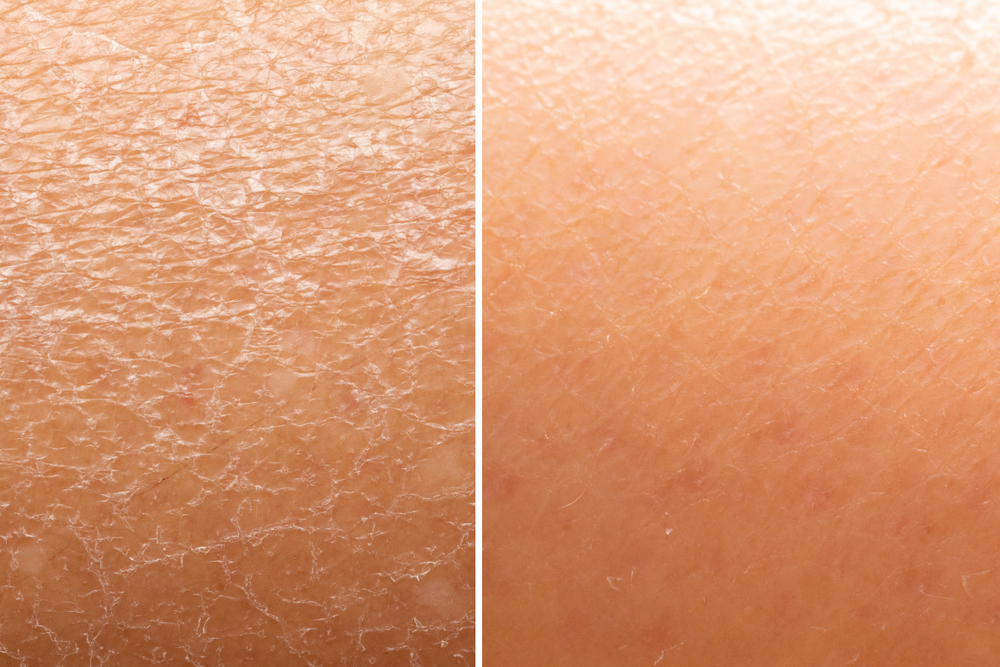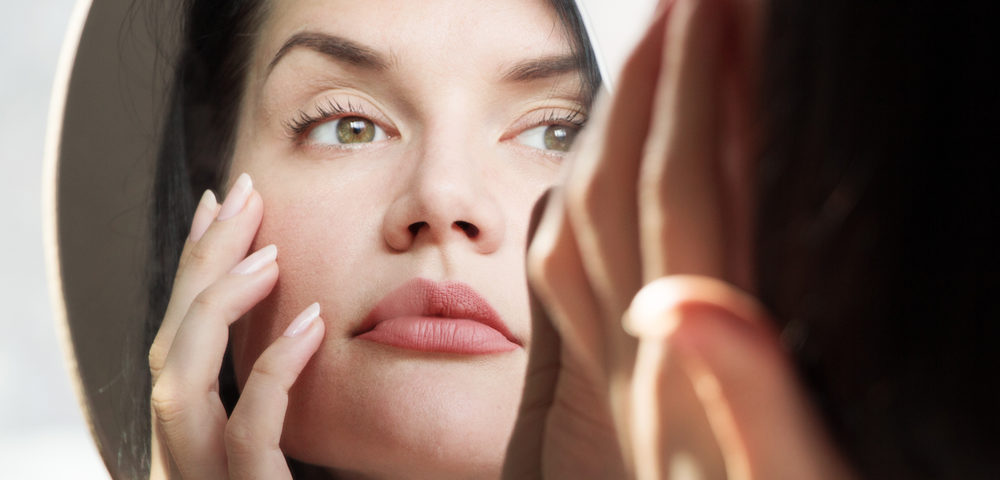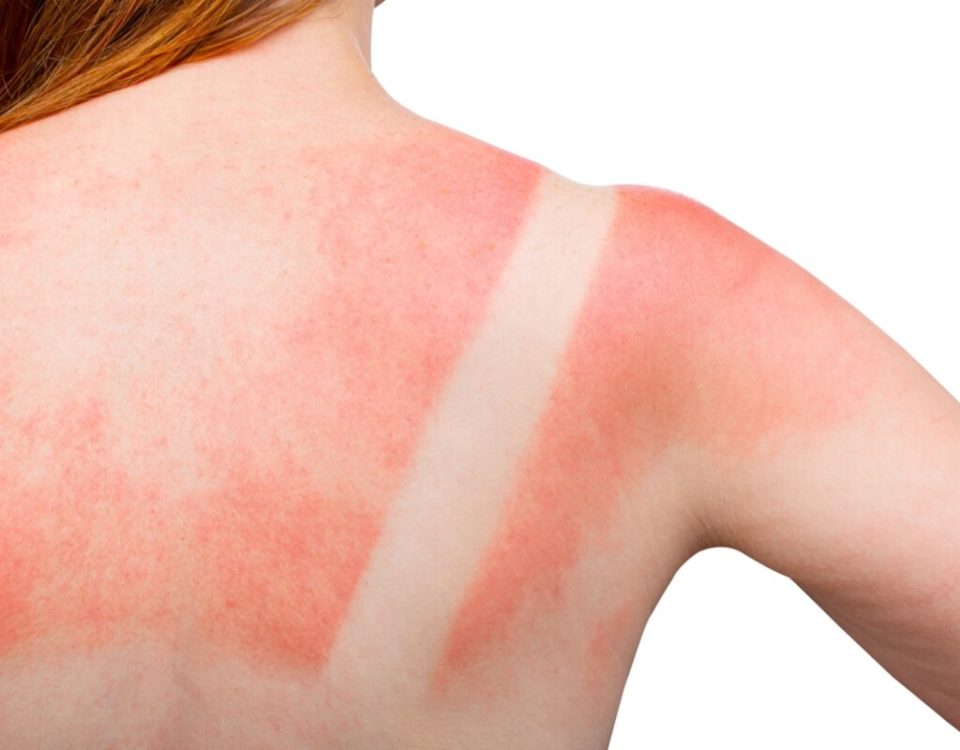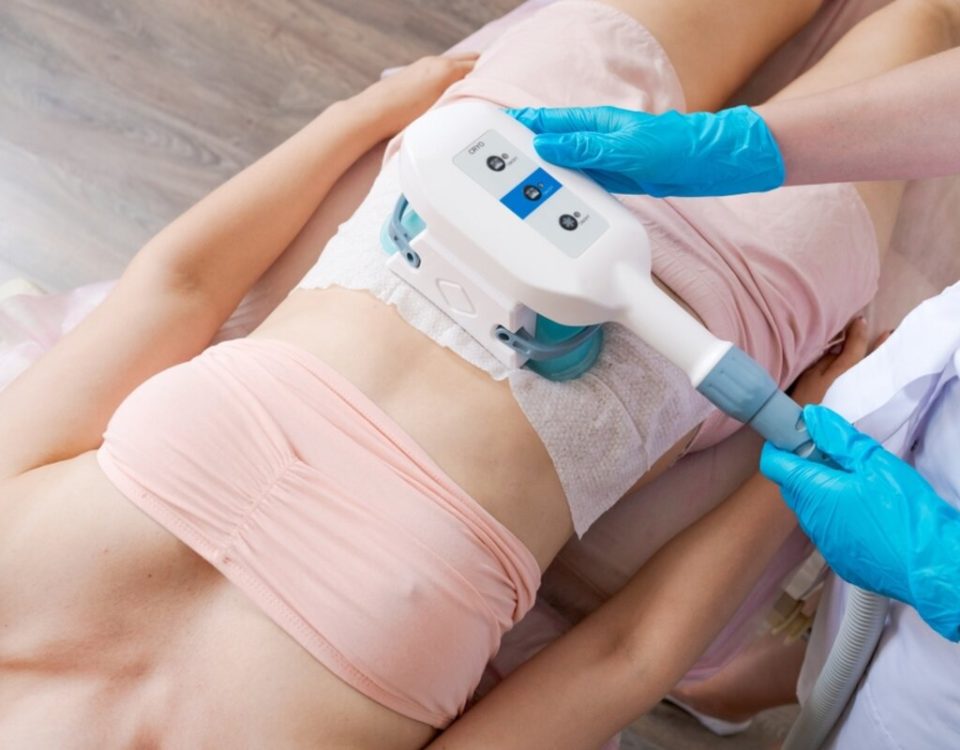
The Positive Impact of Skin Exfoliation and Aging
October 28, 2021
UV Radiation: Damage, Treatment, and Everything In Between
November 16, 2021The best way to care for your skin is by understanding what skin type you are. While there are many different skin types, most people have some variation of dry or oily skin.
Managing your skin varies on its specific needs, so clearly identifying whether or not you have dry or oily skin is the first place to start.
How do you tell if you have dry skin vs. oily skin? Read on to learn more about these skin types for healthier, glowing skin year-round!
Working With Your Skin Type
Figuring out which type of skin you have and how to take care of it doesn’t have to be a hassle. Take a look at the seven different skin types below:
- Normal
- Oily
- Dry
- Combination
- Acne-Prone
- Sensitive
- Mature
Your genetics and some environmental factors determine your skin type and indicate how prone you are to certain skin conditions. For example, if someone has sensitive skin, they may also develop acne or dry skin from certain products. Mature skin types are naturally more dehydrated, which means you’ll need to change your skincare routine over time.
Distinguishing Between Dry Skin Vs. Oily Skin
Two of the most common skin types are dry and oily skin. Since there are entirely different, let’s take a closer look at how to identify these skin types below:
Dry Skin Types
Dry skin is the result of a lack of oil in the skin. Compared to other skin types, dryness creates rough, dull, or flaky textures that can feel tight, itchy, or irritated. Less moisture in the skin means less elasticity which clearly shows more visible lines and wrinkles. Although more women are susceptible to dry skin, all skin does get dryer as it ages.
How to Tell if You Have Dry Skin
Dry skin is usually affected by changing seasons. For example, you may find more relief in the summer months, but the winter months can cause pain, itchiness, and dryness for those with this skin type. Some ways to discern whether or not you have dry skin include:
- Need to moisturize to gain relief
- Itchy, burning skin
- Tightness
- Fluctuates with the season
- Clearer lines and wrinkles
- Eczema or another similar skin condition
Make sure to drink plenty of water and stick to a moisturizing skin routine to help hydrate your dry skin.
Oily Skin Types
Oily skin may have a shiny or greasy appearance, thanks to the excess amount of sebum production. This oily, waxy substance is naturally produced by your body’s sebaceous glands and works to moisturize and protect your skin. People with this skin type tend to have larger pores or are acne-prone due to the more oil located along their T-Zone, also known as the forehead, nose, and chin area.
How to Tell if You Have Oily Skin
If your skin looks shiny, you may have oily skin. Take a look at some of the other indicators of oily skin below:
- Enlarged and clearly visible pores
- Thicker, pale skin
- Blotting sheets soak up moisture
- Acne-prone skin
- Dark spots appear after acne breakouts
- Makeup doesn’t stay in place
Although oily skin is prone to acne, there are many benefits to having this complexion. Over time, your skin will continue to look more supple, younger, and be prone to fewer wrinkles than other skin styles.
How Changing Seasons Impact Your Skin
Your skin can be greatly affected by the changing seasons. Explore some of the ways you can prepare and protect your skin throughout the year:
Spring and Fall
During these transitional periods, it’s a great idea to focus on upping your exfoliation and moisturizer. Dermaplaning is a nonintrusive and painless procedure that is perfect for exfoliating your skin without any downtime. Pair it with some revitalizing oils, serums, and even facial mists to lock in moisture.
Summer
Dry and oily skin are affected differently by the added heat and moisture in the summer. Dry skin will need more hydrating foods, extra water, and regular moisturizer to fend off dryness from excessive perspiration, chlorine from pools, and heat. On the other hand, oily skin may need to consistently blot skin to remove excess moisture to avoid redness, acne, and irritation. Read more summer skincare tips here.
Winter
Cold weather can bring harsh skin conditions for both oily and dry skin types. Dry skin sufferers should focus on locking in essential moisture with lotion, dry skin face moisturizer, and lip balm. While hot showers and baths may be tempting, they can add to irritation and excessive dryness. Oily skin types can benefit from photofacial treatments during this time to clear sun and acne discoloration.

Great Treatments for Dry and Oily Skin Types
There are thankfully several great ways to treat dry or oily skin types, from hydrating facials to deep exfoliation treatments. See some great examples below:
Ideal Dry Skin Treatments
Chemical peels are a wonderful choice for minimizing acne scars and fine lines and even tackling excessive dry skin. Pair it with an exfoliating treatment like dermaplaning or microdermabrasion to reveal healthier skin. Those with dry skin can find nourishing relief throughout the year with regular facials as well.
Perfect Oily Skin Treatments
Since those with oily skin can suffer from added sensitivity or acne, it’s best to tackle those issues differently than dry skin. Chemical peels are a great way to clear out your skin and reduce pigment problems. Additionally, consider using IPL photofacials for treating hyperpigmentation and uneven skin texture. Microneedling is another excellent way to treat any remaining acne scars.
Improve Your Skin Care Routine With SpaMD
Whether you have dry or oily skin, there are plenty of ways to boost your care routine to maintain your skin’s longevity. As the seasons change, it’s best to incorporate medical spa treatments to help preserve and protect your skin. Consult the skincare professionals at SpaMD to find the best treatments for your dry or oily skin. Contact us today to set up your consultation.
New Clients:
$35 deposit for all new clients
Cancellation/No Show Policy:
$35 fee for all no show, no call and any cancellations less than 24hrs before the start of your appointment.Any prepaid services will be forfeited.
Call us at +1(651)222-4490
Email us at SpaConsultantsMD@gmail.com
or, Schedule a free consultation
We are located on the main level inside of the Blair Arcade Building. We validate parking in the lot connected to the building off of Selby. Be sure to bring your ticket in with you!
Business Hours:
Monday: 9:00am - 8:00pm
Tuesday: 9:00am - 5:00pm
Wednesday: 9:00am - 8:00pm
Thursday: 9:00am - 8:00pm
Friday: 10:00am - 5:00pm
Saturday: 9:00am - 2:00pm (3 Saturdays per month- please call or email for more information)




